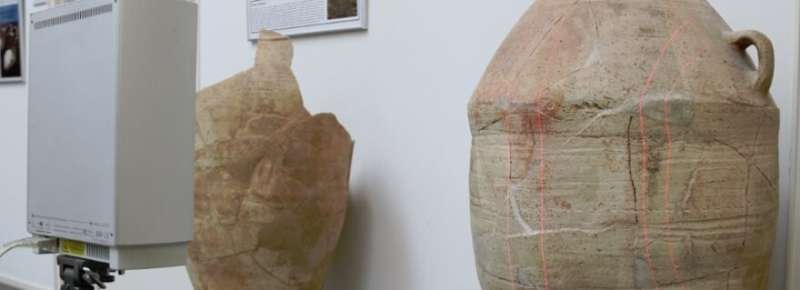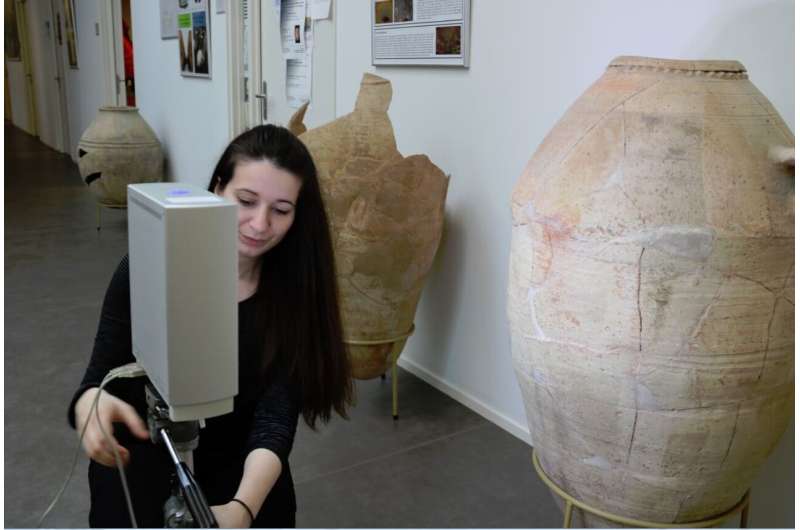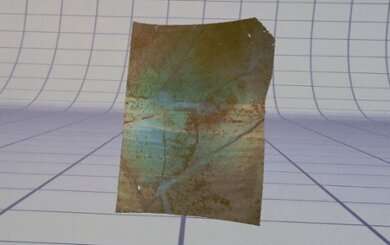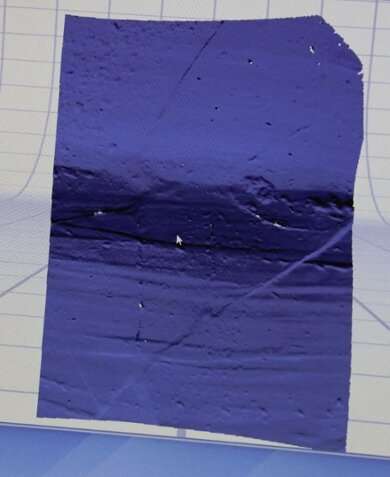Exploring 3-D technology in pottery studies: 'It is the future'

In the depots of the Faculty of Archaeology, many artifacts, accumulated after decades of fieldwork across Europe and the Middle East, are stored. A new project, the Leiden Inventory Depot (LID), aims to unlock this wealth of information to the outside world. The 3-D scanning of objects takes a central role in this endeavor. Our master's student Vasiliki Lagari is contributing to the creation of the first 3-D scanning, documentation and visualization of fragments and vessels from the Leiden pottery collection.
Diving into the technology
As a student in Digital Archaeology supervised by Dr. Karsten Lambers and Dr. Chiara Piccoli, Vasiliki will focus her master's thesis on the methodology of 3-D scanning applied to archaeological ceramics. In order for her to start on this, however, she first had to dive into the technology herself. For this, she is now following an internship supervised by Drs. Martina Revello Lami and Professor Joanita Vroom.
"Professor Vroom bought the scanning device within the framework of her NWO VIDI-project Material Culture, Consumption and Social Change," Vasiliki explains, "and she proposed to practice with the equipment scanning some of the glazed and unglazed objects from the depot. For me it was the perfect way to gain experience before starting the actual work with the thesis."
Starting from scratch
"Every person that approaches 3-D scanning technologies will start from scratch and customize their method," Martina adds. "It all depends on the scanner and the software, and you will need to take the time to learn the method." Especially regarding small objects,3-D techniques have been underused and there is a lot of potentialities to explore in terms of analysis, interpretation , reconstruction, knowledge transfer among researchers and public output. "The technology is more frequently employed for scanning buildings and large objects. If it is used for small objects, it is often in the context of documentation. But using 3-D for documentation purposes only is very narrow."

Acquiring point clouds
The opportunities for documentation are obvious. "Just for archiving purposes alone it is easy to use the scanner and have a nice image and 3-D model," Vasiliki says. "Instead of taking hours drawing an object, you can make a scan and create a 2-D image of that." But this is only the start of the technology's potential. "When scanning an object, you acquire not just a picture," Martina points out, "not just a drawing. You acquire a point cloud." Every single point is a number, and every number can be queried, studied, and interpreted.
The topography of an object
Emphatically gesturing, Martina continues: "You can ask questions that go from the automatic recognition of certain features, such as the surface traces left by the hands of a potter while shaping a vessel, to the automatic refitting of fragments belonging to the same object but not stored in the same place." A 3-D scan catches the topography of an object far more deeply and precisely than our eyes. "You gain more data. And by integrating the expertise of digital specialists and ceramic analysts those data provide new information, fueling new lines of research."

Applications
Both women point at the wide range of applications, also for heritage management. Martina: "Not in the last place this technology is important for public outreach." "One of the purposes of the internship is for Professor Vroom take some samples of 3-D models and upload these to online exhibitions for Byzantine and Islamic pottery," Vasiliki adds.
"And," Martina concludes, "if you have a perfect 3-D scan of an object, it is perhaps easier to return the object to the community where it came from. In several pioneering projects, 3-D scanners are used to document artefacts directly during fieldwork. It is not yet a common practice, but 3-D will soon become integral part of the archaeologists' tool kit." Vasiliki grins. "It is a perfect instrument, it is the future."

Building a 3-D archive
But first things first. "At the moment we are still archiving and getting hold of the reference collection," Martina returns to the present. "We will start building a 3-D archive. And we have to plan internships for the students. We hope we can become a school of excellence here in Leiden thanks to the collaboration between the Digital Archaeology, World Archaeology and Material Culture Studies research groups."
Laughing, Vasiliki adds a bit daunted: "We have work to do!"
Provided by Leiden University



















